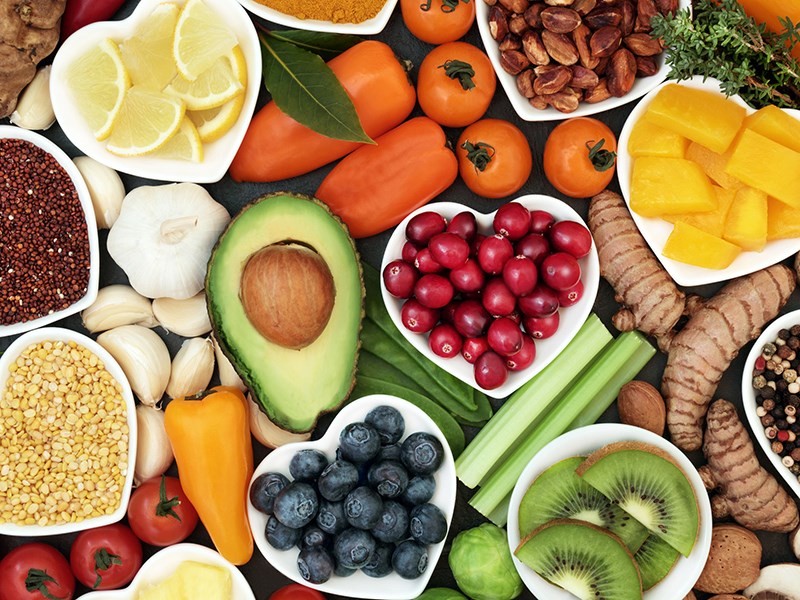In my last column, I wrote about the fallacy of the six-pack as a measure of fitness or core strength and stability.
In so doing, I briefly touched on diet. Having a visible six-pack (rectus abdominis) is typically built on a foundation of diet, and most of us cannot out-train our diets.
It is worth revisiting the concept of “diet.” The majority of us are not working toward a competition goal, but are looking for health, strength and longevity. In that case, a balanced approach is key.
Let’s get this out of the way first: it’s not necessary to add/remove anything from your diet unless you are allergic, vegetarian/vegan, or like me, find some foods too cute to eat. I know that may garner some skepticism or detractors, but I firmly believe it.
The first problem with diets is the word “diet.” Diet doesn’t inherently imply weight loss. I’d like to make a distinction. Your diet is the food you habitually eat.
A “popular diet” on the other hand, is a special course of food you restrict yourself to with the goal of losing weight. There are certainly medically prescribed diets, but those are easy to talk about. If it’s prescribed, follow it.
Popular diets ask you to take things out, restrict yourself and sometimes even fast. One of the tricky issues with navigating these diets is that not everyone you know and socialize with is on the same diet. We are generally social creatures. We eat out at restaurants together, have dinner parties and often celebrate and reward ourselves with food.
Food is for many of us intrinsically linked to family, love and home. Forcing ourselves into a diet that betrays these things will inevitably fail, unless you have Hulk-level willpower, especially since once on a popular diet, you are committed indefinitely.
Look at how so many diets that want to take foods out try to recreate them with other ingredients. For example, cauliflower rice, or using spaghetti squash in place of pasta. Nothing is wrong with this, but it really points to our longing for these foods and our connection to them.
Even chocolate and coffee, my everyday staples, are getting a bad rap these days. And once you achieve your desired weight on a popular diet, most likely you’ll give it up in favour of the foods you know and love.
For example, if your diet restricts dairy, but you love cheese, once you hit that magic number on the scale, you decide you can sneak in a little cheese. Then yogurt and then milk.
Before you know it you’re back to the diet you had before. In the end, everything we do is a series of choices; oftentimes the intention of the moment wins out over any plan or logic.
The key, then, is moderation. Take something away from someone completely and they may fixate on it. But keep it in their diet moderately and it is not a concern because they can have it if they want it.
Eating moderately also does not demonize food, in turn making you feel guilty for eating. You need protein, carbohydrates and fats in your everyday diet. Fats and carbs are not the enemy. Your training success and longevity rely on your diet. They rely on your making mostly good choices.
Yes, drink lots of water. Yes, include lots of vegetables, and raw if you can. But do not stress over that cookie you had with lunch. It was one cookie.
One of the hardest things for many people to come to grips with in our current sociocultural setting is that the number on the scale is not who you are. It does not determine your self-worth, and oftentimes does not reflect your actual strength or health. Be moderate, eat well and consume foods that help to support your goals.
Do what you can with what you have where you are, and always prioritize the positive.
A day in my (meal) life
To complement my meals, I drink coffee every morning, lots of water throughout the day, and usually some mint green tea at night.
Breakfast: One cup cooked oatmeal with a tablespoon of honey or maple syrup, sprinkled with chia seeds and hemp hearts. Blueberries, strawberries and half a banana. One poached egg. One piece of whole-wheat toast with natural peanut butter.
Snack: 1/2 cup of hummus with carrot sticks.
Lunch: Whole-wheat bagel with cream cheese, lox and capers. Side green salad with lots of raw vegetables.
Snack: A handful of almonds with dried figs and apple slices.
Dinner: Two cups (approximately) vegetarian lasagna. Side green salad with lots of raw vegetables. And a chocolate chip cookie for dessert!
Donʼt forget to enjoy your meals. Everything in moderation, with your goals in mind.
One of the best tools when it comes to fuelling your body is a food journal to help you see your patterns and habits, and where you may be overindulging.
Remember to drink lots of water throughout the day.
Melissa Sloos is a certified group fitness instructor; spin instructor and studio manager at Coast Fitness.



